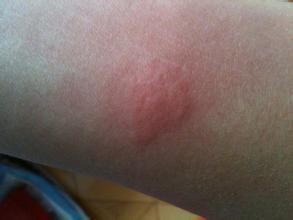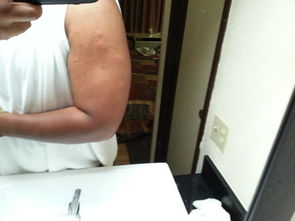
Bedbug Bites: A Comprehensive Guide
Bedbug bites can be a pesky and often frustrating problem for many people. These tiny, nocturnal pests can cause discomfort, itching, and in some cases, allergic reactions. In this article, we will delve into the details of bedbug bites, including their symptoms, causes, treatment, and prevention methods.
Understanding Bedbugs

Bedbugs are small, flat, oval-shaped insects that feed on the blood of humans and animals. They are reddish-brown in color and can grow up to 5-7 millimeters in length. Despite their name, bedbugs are not just found in beds. They can infest any place where humans sleep, including hotels, motels, and even homes.
Bedbugs are most active at night, and they feed by piercing the skin and injecting an anesthetic and anticoagulant. This allows them to feed without being detected. After feeding, bedbugs will return to their hiding spots, which are often in cracks, crevices, and furniture.
Identifying Bedbug Bites

Bedbug bites can be difficult to identify, as they often resemble mosquito bites. However, there are some key differences. Bedbug bites typically appear in a line or cluster, and they may be more itchy and red than mosquito bites. In some cases, bedbug bites can cause a raised, red bump with a clear center, which is known as a wheal.
It’s important to note that not everyone reacts to bedbug bites in the same way. Some people may not have any reaction at all, while others may experience severe allergic reactions, including hives, swelling, and difficulty breathing.
Diagnosing Bedbug Bites

Diagnosing bedbug bites can be challenging, as they can be confused with other skin conditions. However, there are several methods that can help identify bedbug bites:
-
Physical examination: A healthcare provider can examine the bite marks and look for signs of bedbug infestation, such as bedbug eggs, feces, and shed skins.
-
Medical history: A healthcare provider may ask about recent travel, exposure to bedbugs, and any symptoms that may be related to bedbug bites.
-
Bedbug detection: A trained pest control professional can use various methods to detect bedbugs, such as canines, heat detection, and visual inspections.
Treating Bedbug Bites
Bedbug bites typically do not require medical treatment, as they usually heal on their own. However, there are several ways to alleviate the symptoms and prevent infection:
-
Wash the bites with soap and water to prevent infection.
-
Apply an antiseptic ointment or cream to the bites.
-
Use over-the-counter hydrocortisone cream to reduce itching and inflammation.
-
Take an antihistamine to reduce itching and swelling.
In some cases, a healthcare provider may prescribe oral corticosteroids or other medications to treat severe allergic reactions.
Preventing Bedbug Bites
Preventing bedbug bites involves taking proactive measures to avoid infestations and to detect them early:
-
Inspect your sleeping area regularly for signs of bedbugs, such as eggs, feces, and shed skins.
-
Keep your sleeping area clean and clutter-free.
-
Use a vacuum cleaner to remove bedbugs and their eggs from your mattress, box spring, and furniture.
-
Consider using a mattress encasement to prevent bedbugs from entering your mattress.
-
When traveling, inspect your hotel room for signs of bedbugs before unpacking your belongings.
By taking these precautions, you can reduce your risk of encountering bedbugs and experiencing their pesky bites.
Conclusion
Bedbug bites can be a nuisance, but with proper knowledge and prevention methods, you can minimize your risk of encountering these pests. By understanding the symptoms, causes, and treatment options for bedbug bites, you can take the necessary steps to protect yourself and your home.



